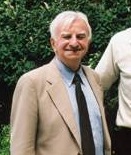Magnetic Energy in Amp?re-Neumann Electrodynamics
Year: 1988
Keywords: electromagnetism, electrodynamics, magnetism, magnetic energy
Electrodynamic pendulum experiments have shown there is insufficient magnetic energy in the field to balance the Lorentz force on metallic conductors by field-energy momentum destruction. Local action (magnetic pressure) on metal conductors is therefore an illusion that should be replaced by simultaneous far-action between current elements. This means the forces across air gaps of electric motors and generators are the action-at-a-distance forces of Amp?re-Neumann electrodynamics. Neumann's electrodynamic potential which in modern terminology is called magnetic energy, is potential energy bound to the atoms of the conductor metal The Amp?rian current element turns out to be a diamagnetic conductor atom. The diamagnetism has to arise from the electronic structure of the atom and could be an ?electron hole? left by the absent conduction electron. A finite amount of magnetic energy has been assigned to every pair of Amp?rian current elements. As a result of this, every pair of conductor elements is associated with a finite amount of mutual inductance. The mutual magnetic energy of the current element pair led to the theoretical discovery of a new ponderomotive torque and a new electromotive torque acting between the members of the current element pair. The torques involve the two angular degrees of freedom of the current elements and, therefore, have been termed the alpha-torque and the epsilon-torque.


